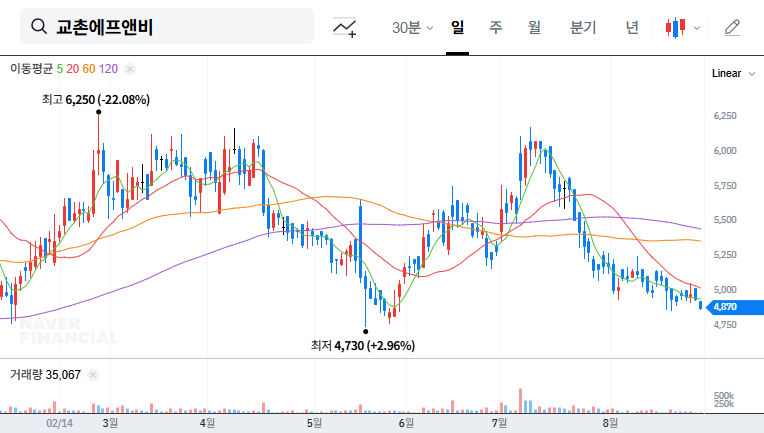
1. Kyochon F&B, What’s Changing?
Kyochon F&B will announce its core strategies of business diversification, global expansion, and ESG management strengthening at the IR on September 1st. The company plans to diversify its business portfolio through eco-friendly packaging, craft beer, and distribution businesses, and accelerate its global market penetration in the US, China, and Southeast Asia. It also plans to establish a sustainable growth foundation and enhance corporate value through ESG management.
2. Solid Growth, Positive Fundamentals
Kyochon F&B achieved solid performance in the first half of the year with sales of KRW 250.6 billion and a slight increase in operating profit. Capital increase through free stock offerings and stable debt ratio support its financial soundness. Strong brand power and R&D capabilities in the chicken franchise market are the driving force behind securing a constant competitive edge.
3. Key IR Points & Investor Action Plan
- New Business (Eco-friendly Packaging): Pay attention to specific execution plans such as production facilities, investment size, and estimated sales. Check risk management plans, including raw material supply and price volatility, and profitability securing period.
- Global Business Expansion: Carefully analyze the performance and future plans for each market in the US, China, and Southeast Asia, including localization and differentiation strategies.
- Franchisee Support and Profitability Improvement: Check the possibility of continuous profit generation through franchisee sales increase plans, new menu strategies, and measures to address rising costs.
- ESG Management: Check long-term investment value by confirming ESG management goals beyond eco-friendly packaging, achievements, and investment plans.
- Shareholder Return Policy: Check efforts to enhance shareholder value through dividend policies and treasury stock buyback/retirement plans after the recent free stock offering.
Investors should comprehensively evaluate the company’s growth potential and establish investment strategies through the content presented at the IR and the Q&A session.
Frequently Asked Questions
What is the background of Kyochon F&B’s entry into the eco-friendly packaging business?
It is to secure a sustainable growth engine in line with the ESG management trend and to meet the needs of consumers who pursue eco-friendly consumption.
What is Kyochon F&B’s competitive edge in the global market?
It secures a competitive edge based on unique taste and quality, brand awareness, systematic franchise management system, and localization strategies.
What is Kyochon F&B’s shareholder return policy?
It recently conducted a free stock offering and plans to announce specific shareholder return plans such as dividend policy and treasury stock buyback/retirement at the IR.
